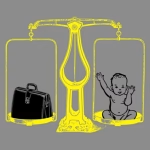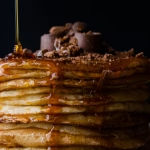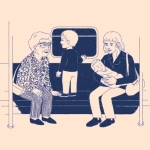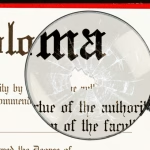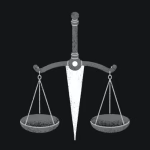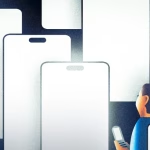At one point, it seemed impossible to stop the social justice movement that started in earnest after the shooting of Trayvon Martin in 2012 and reached its climax eight years later following the murder of George Floyd. By the summer of 2020, numerous documented murders of Black people appeared to have persuaded a significant portion of the American public that racial injustice was unavoidable and unquestionable.
However, the riots that followed—and the chaos they seemed to tolerate—foreshadowed a wave of white resentment that hasn’t gone away yet. During the summer of 2020, a lot of people on the left praised violence and lawlessness as acceptable transgressions, if not political virtues. This impulse shifted to the right in a matter of months, causing even more harm to the liberal order, particularly on January 6, 2021. The Capitol’s sacking was most definitely not brought on by the widespread unrest of the previous year. However, that winter siege was nothing more than the rotten fruit of imitation, a byproduct of the summer uprising.
Two George Floyds appeared in the public eye at the time of his passing. The mortal man, the brother and son, was unemployed when police found him sleeping in a parked car during a long May weekend in Minneapolis. Fentanyl and methamphetamines flooded his system. Even the cashier appeared embarrassed to report that he had allegedly passed a counterfeit banknote just moments before. After surviving a case of COVID-19, George Floyd was asphyxiated in broad daylight by a police officer he had previously collaborated with at a nightclub. According to his biography, the mortal man lived during a period when the country was ready for protest due to the coronavirus pandemic and Donald Trump’s poor handling of it.
Then there is the immortal George Floyd, whose final breaths can be evoked on our screens in a miserable loop. According to Richard Dawkins, the man created a meme, which is an idea that spreads through imitation. Many Americans discovered evidence of a long-simmering notion in the national consciousness in a 10-minute-and-eight-second clip: When the state commits acts of violence, it loses its legitimacy and must be opposed, even if it means retaliating with violence. In a Golgotha in the middle of the Midwest, this immortal Floyd was executed by horizontal crucifixion. On that filthy pavement, a man gave his life for all Americans, calling for his mother who had passed away rather than questioning why his father had abandoned him.
David A. Graham: The murder of George Floyd altered Americans’ perceptions of law enforcement
For a large portion of the nation, Floyd’s murder sparked a summer of rebellion that was clearly justified. The Barack Obama era’s postracial promise had faded. Without rebellion, some Black Americans and many of their supporters did not see much chance of obtaining equality, much less safety. This same underlying notion—that the voiceless must be heard through violence—was used to excuse horrible wrongdoing in January of the following year. (Of course, that wrong was unquestionably right to another group of Americans.) The siege of the Capitol and the summer of 2020 are thus fratricidal twins. They instilled hatred and certainty in every segment of American society, a dangerous mix that still affects almost every facet of our public lives and a large portion of our private ones.
Nearly 8,000 Black Lives Matter rallies were held nationwide during the period of rebellion that followed Floyd’s passing, in addition to large-scale demonstrations that broke out in distant locations like Paris, Amsterdam, London, Seoul, Taiwan, and Helsinki. Outraged by what they witnessed, millions of Americans took part in what was probably the biggest anti-racism protest in human history.
A large portion of the media addressed the fact that the majority of the protests in the United States were peaceful by pointing out that hundreds of them involved either violence, property destruction, or both. Although that constant chant was accurate, it failed to convey the full scope of the chaos that Americans of all political stripes were experiencing. Damage to the Twin Cities alone in Minnesota came to about $500 million.
Racial injustice had little to do with this chaos. According to The Intercept, “hundreds of people who had no apparent connection to the protests commanded the streets of Manhattan’s SoHo district” in New York City a week after Floyd’s passing. “With impunity, they robbed each other and looted businesses.” Every few moments, the tumbling plywood, crashing plate glass, and grating steel punctuated the chaotic medley of getaway engines and burglar alarms. Subsequently, a 21-year-old man was shot. “I don’t think this has anything to do with Black Lives Matter,” a security guard who wasn’t on duty said to a reporter for the New York Times that same evening. It’s just a mess. This is just a pretext for people to act irrationally. “The man declined to give his name, because he, too, was looting,” the reporter wrote.
What caused all of this to occur in the summer of 2020 rather than after numerous prior murders? Daniel Pantaleo, a police officer in New York City, deafened himself to the dying man’s cries in 2014 when he pulled an unarmed Eric Garner to the sidewalk for selling loose cigarettes. He did this by compressing Garner’s windpipe under his forearm. The phrase “I can’t breathe” was first heard by Americans at that time. Floyd would recite it in Minneapolis, and protesters in Paris would learn to chant it in English.
Philando Castile bled out in front of his girlfriend and her daughter on Facebook Live two years later. After being pulled over, Castile calmly declared that he was carrying a licensed firearm, proving that he had done everything correctly. When a jury found the officer who had shot Castile not guilty, protests broke out, but they were nothing compared to what was about to happen.
Sue Rahr: The myth that fuels the violent police culture in America
These are but two instances of the numerous Black men, women, and children whose egregious deaths might have sparked widespread outrage across the country. But until the pandemic turned American life upside down, none of them did. By May 2020, many of us had lost our daily routines, were working remotely and homeschooling, or were worried about not working because of a young president whose incompetence had become deadly.
At that moment, a deadly altercation in Georgia appeared on our screens. A young man from Georgia named Ahmaud Arbery had been shot and ambushed while jogging in a neighborhood that was predominately white. Breonna Taylor, a young medic, was shot dead by Kentucky police after they broke into her home a few weeks after Arbery was killed. The pivotal moment came when Derek Chauvin knelt on Floyd’s neck.
In the journal Liberties, author Paul Berman wrote, “It may seem excessive to draw significant conclusions from a single video shot on the sidewalks of Minneapolis.” “But that’s the way it is with the historic overnight political conversion moments.” Berman brought up the example of Anthony Burns, who had escaped slavery in Virginia and been apprehended in Boston. His trial sparked demonstrations that attracted national notice and energized the abolitionist movement. According to Berman, “the arrest of one slave proved to be the incendiary event, even though there were four million slaves in 1854.”
The possibility that the nation was suffering from a racial illness suddenly seemed indisputable to a sizable segment of the American left and center, as well as some members of the right. White people who were aware of the disproportionate toll COVID-19 was having on communities they did not belong to made up a large portion of this group. Any false beliefs these Americans may have had about the strength of their society and the overall course of its development were destroyed in the early months of the pandemic.
The rhetoric of secular social justice became fervently religious. Specifically, “whiteness” was reinterpreted as an original sin. Supporters of this theory came to believe that they were part of a system of implicit bias and racism. And they thought that these institutions had enabled a lunatic like Trump to endanger American lives with the same callousness that a police officer displayed while kneeling on the neck of a writhing, handcuffed civilian.
These Americans felt compelled to rebel against something. The protest against police brutality gave progressives a platform for rebellion, while Trump and his followers rebelled against orders to stay at home. They believed they were fighting to save the lives of Black people, whose lives were disproportionately killed by a scourge that their right-wing opponents were aggravating. This contradiction created a fierce new arena for intra-white status jockeying. According to Reihan Salam’s 2018 article, it gave “those who see themselves as (for lack of a better term) upper-whites” a new chance to distance themselves from people they’ve judged to be lower-white.
Following Floyd’s murder, an oppressive moral panic that sought to address all perceived and actual racial injustice and used violence and property destruction to support its claims spread from an understandable and even noble concern for the safety and well-being of Black communities. It contributed to the counterreaction from which America has yet to recover.
When I was in Paris, crouched over my smartphone, watching dozens of people scale the Capitol’s sides, I felt more alienated from America than I have ever felt before.
I was astounded by the event’s artificiality as I watched it unfold in real time and repeatedly viewed clips. Some rioters arrived dressed as Founding Fathers, while others draped themselves in Stars and Stripes and tacky Trump memorabilia. In the midst of the chaos, many people wandered the halls of Congress wearing expressions of disbelief, marveling like tourists. Others recorded themselves, apparently just to confirm to themselves that this was all true.
That day made me think of the “society of the spectacle” that 20th-century sociologist Guy Debord characterized, where “everything that was directly lived has receded into a representation.” Images and videos of the Washington brawl started to represent American society as a whole, a performance of the nation’s divisions that were amplified by memes. Debord wrote, “The spectacle is a social relation between people, mediated by images, rather than a collection of images.”
Quinta Jurecic: January 6th still took place
Trump is arguably the American showman who has a deeper understanding of the power of spectacle. Filtered through his will, reality is little more than a two-dimensional ploy to sell to the public—a “stolen” election, for example. The rebellion, which was sparked by online conspiracies and phony footage of “ballot suitcases,” was a symptom of a more extensive and ongoing attack on reality, which historian Christopher Lasch described as America’s “pervasive air of unreality” half a century ago. According to him, the emergence of mass media has turned life into a sequence of “impressions recorded and reproduced” by contemporary technologies.
Today, there are significant and powerful segments of the progressive left that share Trump’s propensity to flatten and distort reality. The Proud Boys and other organized militias were among the January 6 mob members who had prepared for an armed uprising—standing by, as directed by the president. But many others lacked training and organization. In Ferguson, Minneapolis, Kenosha, Portland, Seattle, and numerous other areas of open lawlessness, they had witnessed the riots and looting. And they had seen a sizable portion of the populace celebrate and even forgive these uprisings.
The idea that such protracted chaos, which is so frequently depicted as “mostly peaceful protest,” would have no impact on the American psyche during a period of increased tension and pandemic is fanciful. The January 6 right-wing uprising was merely a continuation of a trend already evident on the social justice left: the conviction that one’s own moral clarity gives one the right to take to the streets whenever political institutions fail us. The idea that the left was so righteous that even lawlessness was a virtue was a sign of hubris. After enduring the relentless chaos of the previous summer, it is easy to imagine that the populist right learned from this tendency—or found justification in it.
Lawlessness and spectacle have evolved into a governing philosophy in modern times. American citizens have been deported by the second Trump administration, and undocumented immigrants have been transformed into hideous material for the most vile social media posts. Supporters of the president excuse him with seeming ethical certainty even as he disobeys court orders and usurps congressional authority.
The opposing forces of a social-justice movement that has become impatient with the liberal project and a reactionary populism that both capitalizes on and feeds off that impatience have twisted the arc of the American moral universe, wherever it eventually bends. As a result, grief and rage rule both politics and society. These passions will eventually explode in Minnesota. They later rage through D.C. Both blindness and ennobleness are possible, and we usually don’t know which until it’s late.

